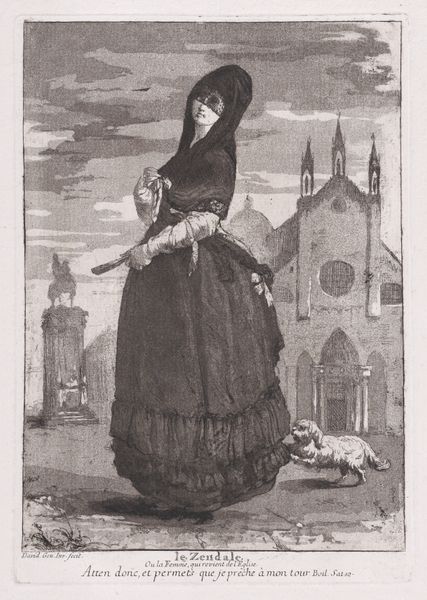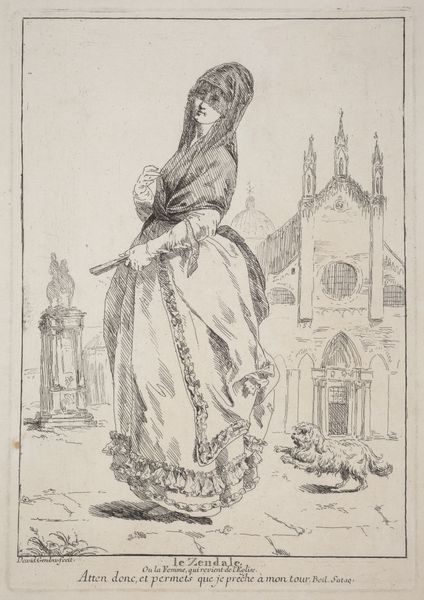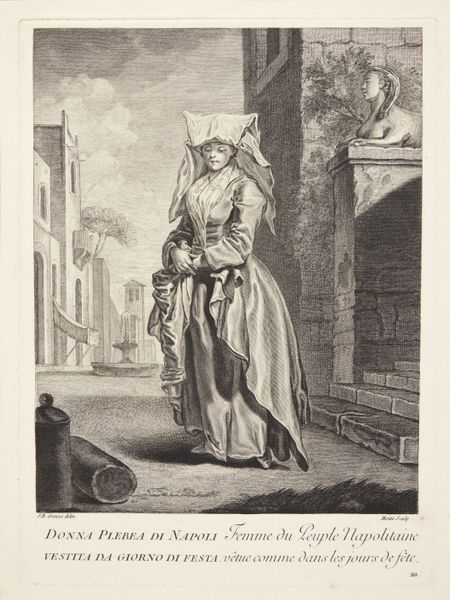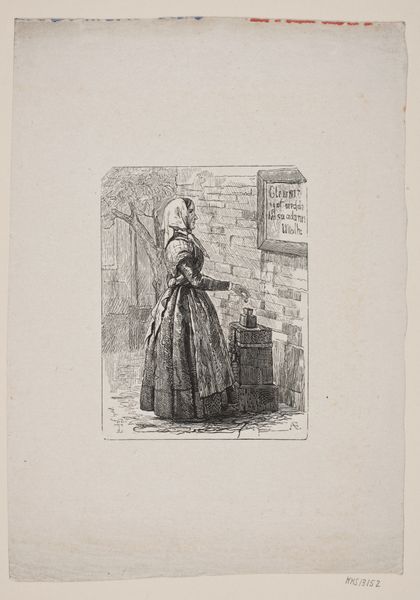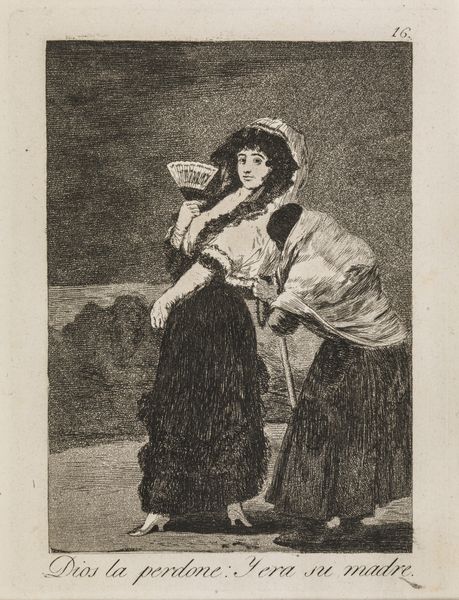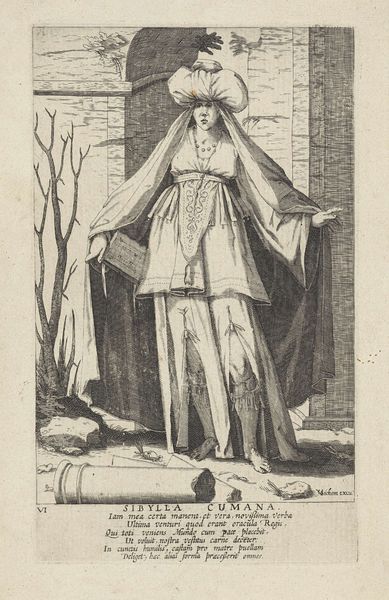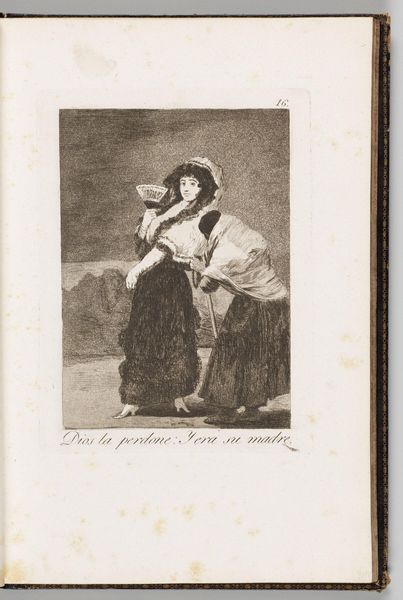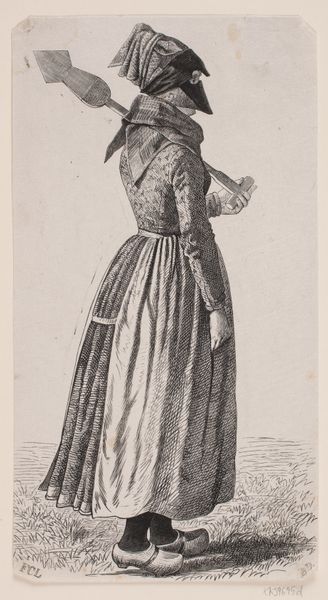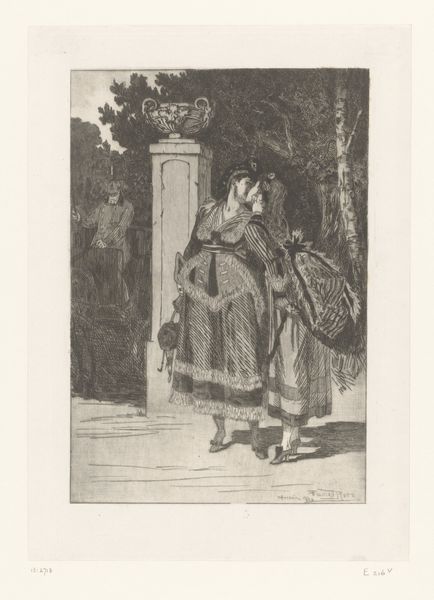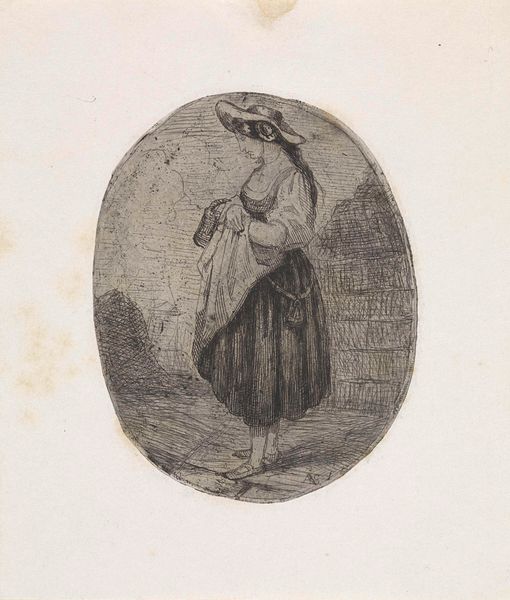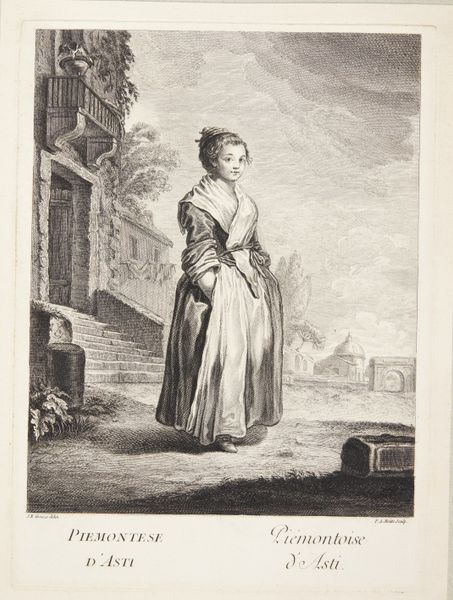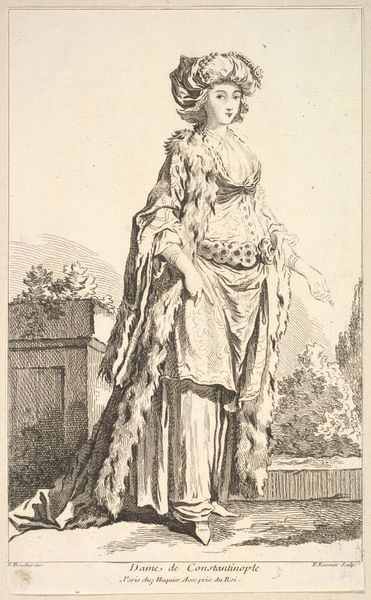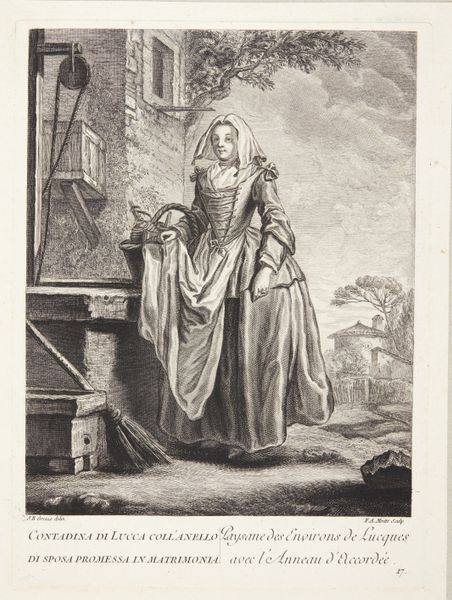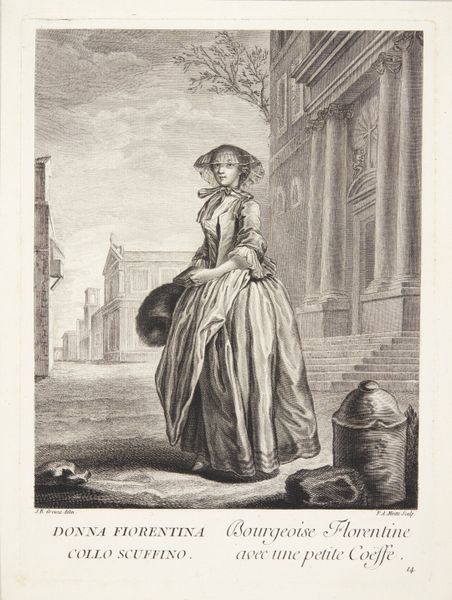
Dimensions: 8 11/16 × 6 5/16 in. (22.07 × 16.03 cm) (image)9 5/16 × 6 9/16 in. (23.65 × 16.67 cm) (plate)10 1/4 × 7 7/16 in. (26.04 × 18.89 cm) (sheet)
Copyright: Public Domain
Editor: Standing here with Giovanni David’s 1775 engraving, "Le Zendale - Ou la Femme", it's striking how the textures achieved through etching and engraving bring a certain drama to the scene. The woman’s layered clothing, particularly, looks so tactile. What do you make of David’s material choices and the processes employed in creating this work? Curator: It's key to understand that etchings and engravings like this were, first and foremost, methods of reproduction and dissemination. Look at the labor involved. David, like many printmakers, was producing multiples. The value lies not just in the image itself, but its accessibility. How does this challenge our traditional understanding of ‘original’ artwork, and of ‘high’ art in general? Editor: I see what you mean! This wasn’t just about making one beautiful thing; it was about distributing an image widely. Was it costly? How did the economics play a part in who could afford to produce and then purchase prints like these? Curator: Absolutely. The costs were certainly lower than oil paintings, allowing a broader segment of society to engage with art. Consider too, the skilled labor involved, the workshop practices and hierarchies inherent in printmaking at the time. Each impression bears witness to this production. To me, it's fascinating to examine what an engraving tells us about social structures and labor practices of the 18th century. Does knowing this shift how we understand the scene depicted—this woman in her zendale, out for a walk? Editor: It definitely adds layers to it! I was just focused on her clothing and now I’m thinking about who made the paper and the ink and the labor that made this all happen. Thanks for offering that new perspective on the print's production. Curator: It reminds us that art isn't born in a vacuum but within systems of making, labor, and ultimately, consumption. And it shows us how those systems are part of what the art means.
Comments
minneapolisinstituteofart almost 2 years ago
⋮
Le Zendale belongs to Giovanni David’s series of prints poking fun at Venetian society, made shortly after he arrived for a visit to the island city. It bears a verse from the Tenth Satire of the great and controversial French poet Nicolas Boileau-Despréaux. The Tenth Satire ridicules women’s love of absurd operas and is full of sexual innuendo. The line in the poem is relatively innocuous: "Therefore listen: and let me preach in my turn." In context, however, the line calls into question the virtue of the woman depicted in the image. Perhaps she is not really returning from church. She is more likely a mistress or a courtesan. Another great satirist, the incomparable Spanish artist Francisco Goya, took an active interest in David’s prints, which were the most painterly examples of aquatint produced in Italy during the infancy of the technique. Goya took inspiration from them technically, compositionally, and in terms of content. Le Zendale echoes in three of Goya’s Caprichos.
Join the conversation
Join millions of artists and users on Artera today and experience the ultimate creative platform.
